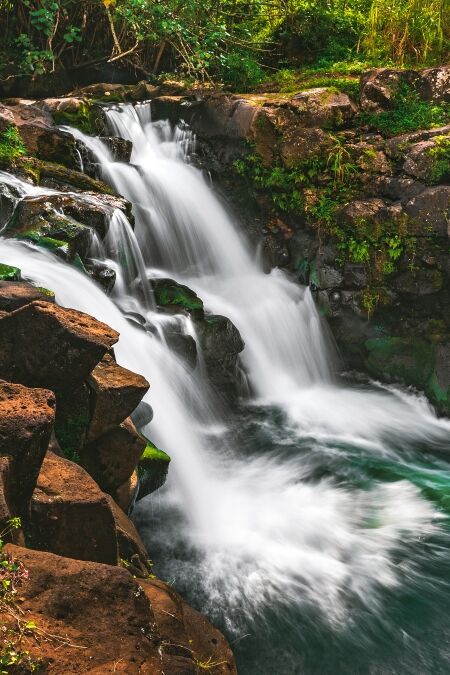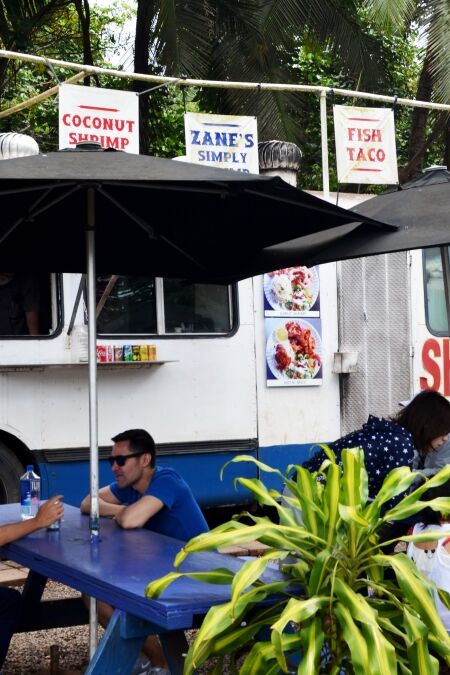Waimoku Falls, a breathtaking 400-foot waterfall in the lush landscapes of Maui, is a must-visit for nature lovers and adventure seekers. Located at the end of the Pipiwai Trail in Haleakalā National Park, this stunning waterfall provides a rewarding and immersive experience in Hawaii’s unique ecosystem. This guide will help you plan your trip to Waimoku Falls, ensuring you make the most of your visit to one of Maui’s top natural attractions.
Highlights
- Waimoku Falls is one of the tallest waterfalls on Maui, plunging 400 feet down a lush cliff, offering breathtaking views and a stunning photo opportunity.
- The 4-mile roundtrip Pipiwai Trail that leads to the falls takes you through a magical bamboo forest, adding a unique nature experience along the way.
- As part of Haleakalā National Park’s Kipahulu District, a visit to Waimoku Falls offers access to other attractions, including the nearby Pools of Ohe’o (Seven Sacred Pools).
- While the trail is not too strenuous, the moderately challenging hike is suitable for most visitors, though it includes some stream crossings and rocky sections.
- Hikers will enjoy a rich mix of landscapes, from tropical rainforests to sweeping valley views, making the journey as captivating as the falls themselves.
History
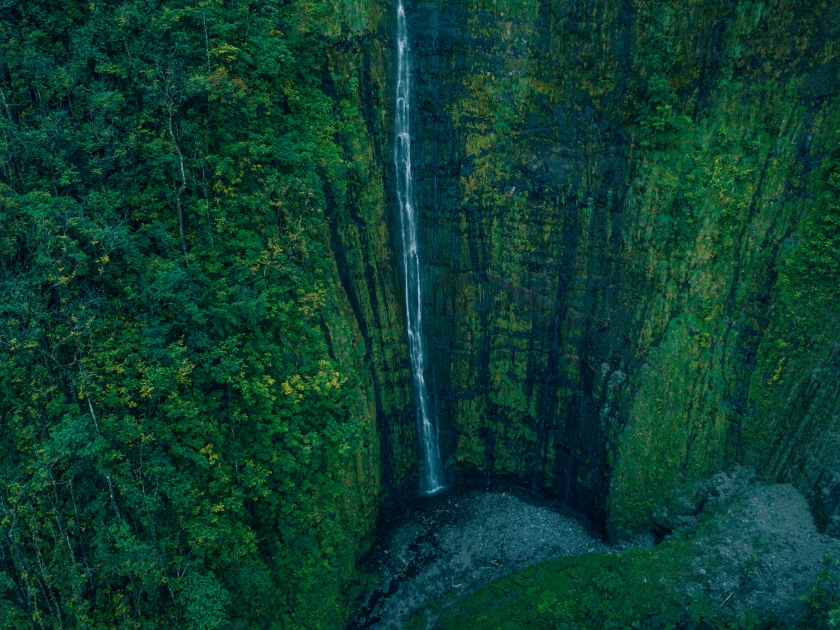
Geological Formation
Waimoku Falls is the result of volcanic activity that shaped much of the Hawaiian Islands. The waterfall cascades down a cliff composed of hardened lava rock, molded over centuries by erosion and the relentless flow of water. This natural process has created the stunning landscape seen today, making Waimoku Falls one of Maui’s tallest and most breathtaking waterfalls. Its dramatic drop and lush surroundings highlight the diverse geological features of Hawaii’s terrain, adding to the allure of the area.
Cultural Significance
The region around Waimoku Falls holds cultural importance to Native Hawaiians. The name “Waimoku” roughly translates to “the water that comes from Mokuhau,” referencing a nearby mountain. The falls are part of the larger ‘Ohe‘o Gulch, a place linked to Hawaiian legends and ancient practices. Historically, Native Hawaiian communities used the land for fishing and farming, demonstrating their deep respect for the natural resources of the area. This cultural connection adds depth to the experience of visiting the falls, providing a glimpse into the traditions that have shaped the island.
A Must-See Destination for Nature Lovers
In recent decades, Waimoku Falls has gained popularity, particularly after the establishment of Haleakalā National Park in 1961. The park draws thousands of visitors annually, many of whom come specifically to hike the Pipiwai Trail and experience the majesty of Waimoku Falls. The waterfall, often featured in travel photography and guides, has become a symbol of Maui’s untouched beauty. Its accessibility and stunning vistas make it a favorite destination for nature lovers and hikers seeking a rewarding outdoor experience.
The Pipiwai Trail
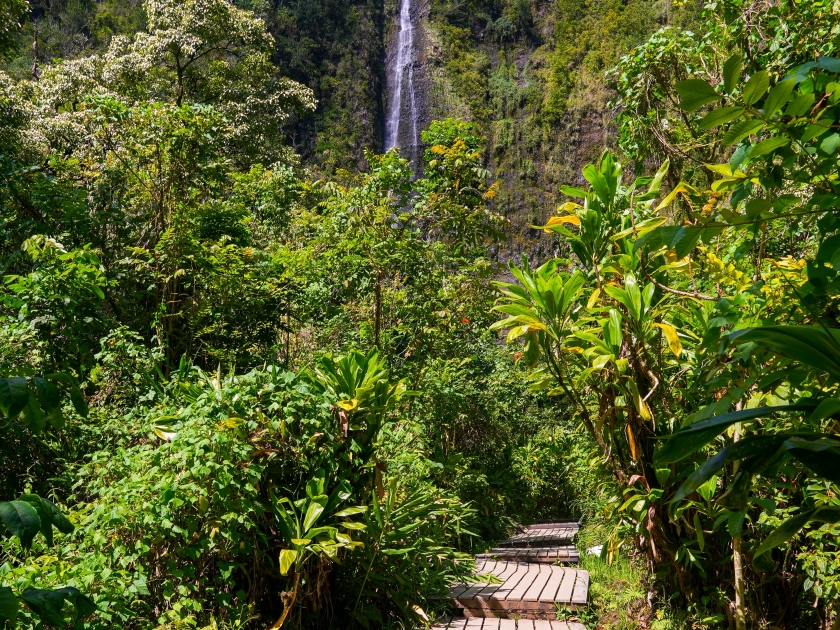
The Pipiwai Trail, a 4-mile round-trip hike, is the scenic path that leads to the magnificent Waimoku Falls. With a moderate difficulty level and an elevation gain of about 800 feet, this trail takes you through diverse landscapes, including a captivating bamboo forest, a massive banyan tree, and views of Makahiku Falls. Along the way, you’ll experience some of Maui’s most stunning natural beauty, and the entire hike typically takes about 2-3 hours to complete, depending on your pace.
The Experience at Waimoku Falls
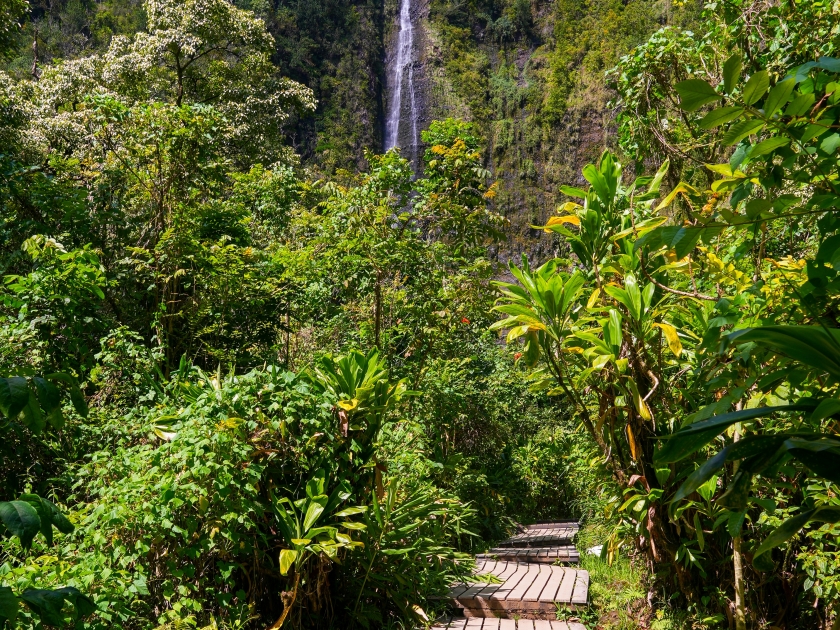
Waimoku Falls stands at an impressive 400 feet, cascading down a sheer cliff surrounded by lush greenery and towering rock walls. The serene and remote setting makes it a breathtaking reward at the end of the Pipiwai Trail. For the best experience, visit in the morning to avoid crowds and enjoy the peaceful atmosphere. Be sure to stay on marked trails and avoid slippery rocks near the falls for safety, as the area can become treacherous, especially after rain.
Cost and Accessibility
Accessing Waimoku Falls requires an entrance fee of $30 per vehicle, which is valid for three days and covers entry to Haleakalā National Park. Parking is available at the Kipahulu Visitor Center, making it convenient for visitors to start their hike along the Pipiwai Trail. This fee supports the maintenance of the park and ensures a safe, enjoyable experience for all travelers.
Tips for Visiting
- Start Early: Begin your hike in the morning to avoid crowds and enjoy cooler temperatures.
- Bring Water: Stay hydrated during the 4-mile round-trip hike, as the trail can be physically demanding.
- Wear Sturdy Footwear: Hiking shoes or sturdy sneakers are recommended for navigating uneven terrain and slippery rocks.
- Pack Light Snacks: Energy-boosting snacks are helpful to enjoy along the trail or at scenic stops.
- Dress in Layers: Maui’s weather can change quickly, so wear layers to adjust for humidity, rain, or sun.
- Follow Safety Guidelines: Stay on marked trails and be cautious near waterfalls and slippery areas.
- Carry a Camera: The scenic bamboo forests, banyan trees, and Waimoku Falls are picture-perfect spots.
- Respect Nature: Leave no trace, and help preserve the natural beauty of the park by taking your trash with you.
Best Times to Visit
The best time to visit Waimoku Falls is in the morning, as the trail tends to be less crowded, and the temperatures are cooler for hiking. Early visits also offer a more serene experience, allowing you to enjoy the tranquility of the waterfall and the surrounding nature. Additionally, the dry season, typically from April to October, is ideal for safer hiking conditions, as the trail can become slippery and muddy during the rainy months.
Nearby Attractions
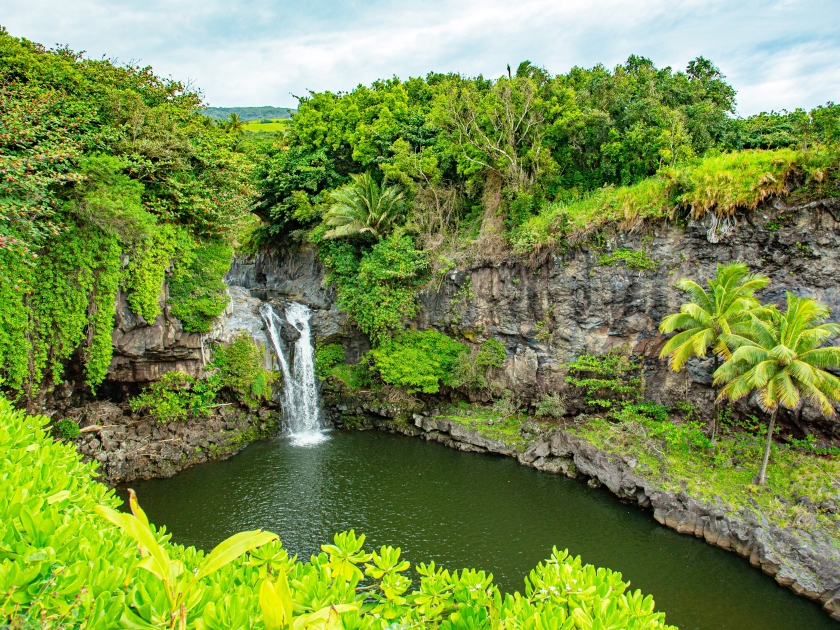
While visiting Waimoku Falls, be sure to explore the nearby Ohe’o Gulch, also known as the Seven Sacred Pools, located within Haleakalā National Park. These stunning cascading pools are perfect for taking in more of Maui’s natural beauty. Additionally, the Road to Hana offers several other scenic stops, including waterfalls, coastal views, and lush rainforests, making it a great opportunity to experience even more of Maui’s breathtaking landscapes during your journey.
Frequently Asked Questions (FAQs)
It takes about 2 to 4 hours round trip to hike to Waimoku Falls via the Pipiwai Trail, depending on your pace and stops along the way.
The Pipiwai Trail can be challenging for beginners due to its uneven terrain and elevation gain, but it’s manageable with proper footwear and moderate fitness.
Swimming and wading are not recommended at Waimoku Falls due to hazardous conditions, including strong currents and falling rocks.
No, you do not need a permit to hike to Waimoku Falls, but there is an entrance fee to Haleakalā National Park where the trail is located.
Parts of the Pipiwai Trail are shaded, especially as you pass through bamboo forests, but there are also open sections exposed to the sun.
Bring plenty of water, sturdy shoes, sunscreen, bug spray, and a camera to capture the scenic views along the Pipiwai Trail.
Location and How to Get There
Waimoku Falls is located in East Maui, along the famous Road to Hana, within Haleakalā National Park. To reach the trailhead, drive approximately 12 miles past Hana to the Kipahulu Visitor Center, where the Pipiwai Trail begins. If coming from Kahului, the scenic drive will take around 2.5 to 3 hours. Parking is available at the visitor center, and a $30 entrance fee per vehicle grants access to the park for three days, covering both Waimoku Falls and other nearby attractions like Ohe’o Gulch.
Hike, Explore, and Be Amazed
Waimoku Falls is more than just a destination—it’s the crown jewel at the end of a rewarding journey through Maui’s diverse landscapes. Its towering 400-foot cascade, surrounded by lush greenery, is a sight you won’t want to miss. So, when planning your Maui getaway, make sure to add the Pipiwai Trail and Waimoku Falls to your itinerary—it’s an experience worth every step!


